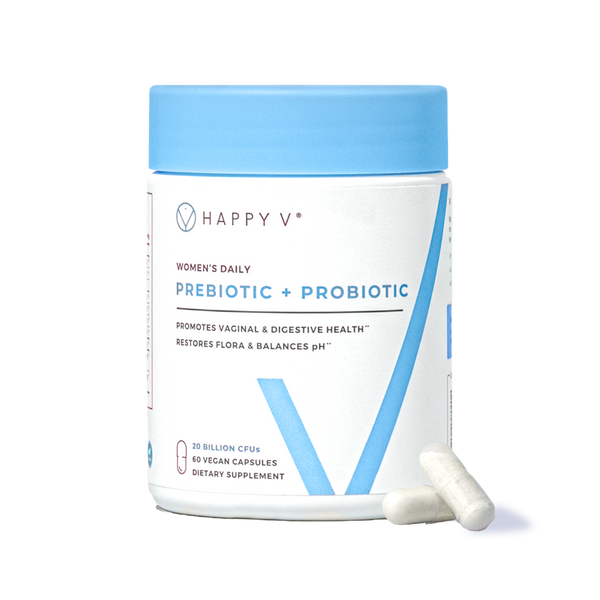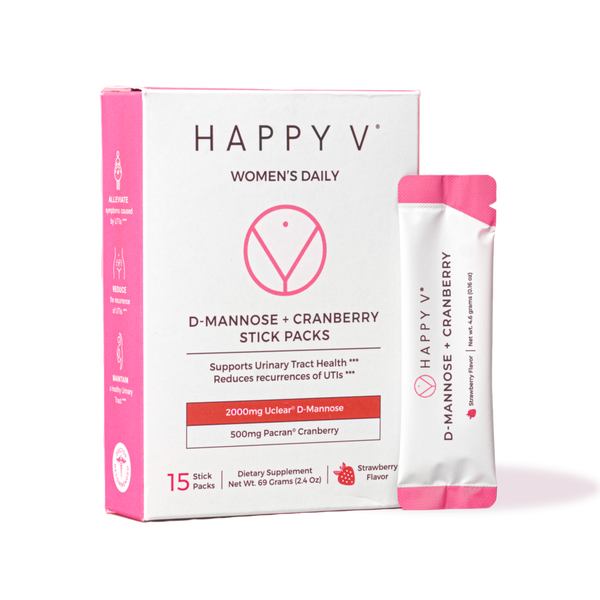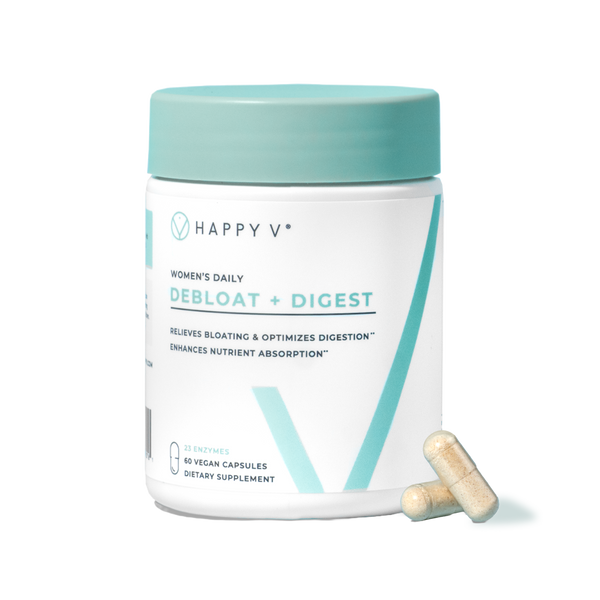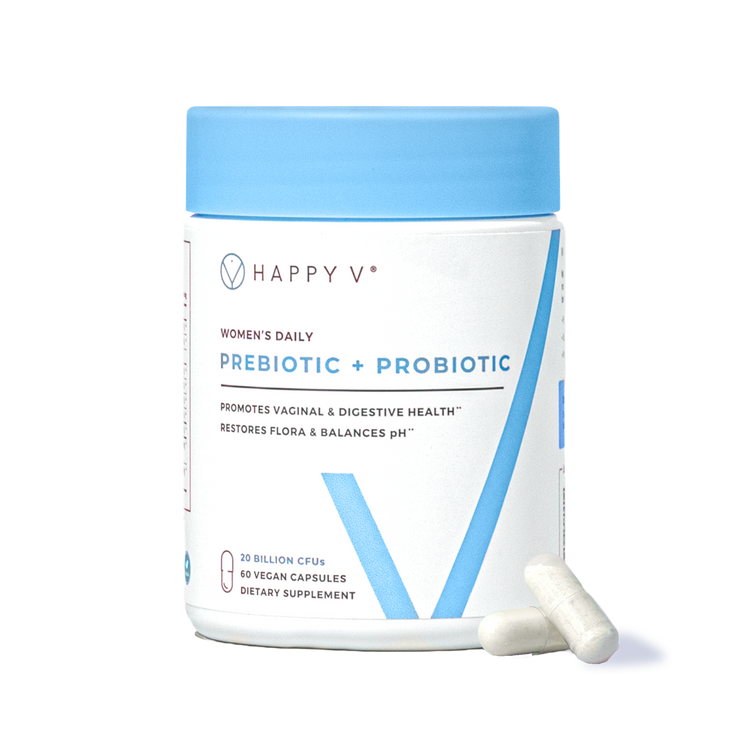- Fact Checked
- July 25, 2025
- 9 min read
Table of Contents
Table of Contents
Fluconazole (Diflucan) is one of the most widely prescribed oral antifungal medications for vaginal yeast infections, known clinically as vulvovaginal candidiasis1. But there’s still confusion about how it actually works. Does it flush out yeast? Should you expect discharge to increase before it gets better? And what if it doesn’t work right away?
Let’s walk through the facts so you can feel informed and empowered during treatment.
This post is for informational purposes only and does not constitute medical advice. See full disclaimer below.
What Is Fluconazole and How Does It Work?
Fluconazole is a prescription oral antifungal medicine, often sold under brand names like Diflucan. It’s used to treat fungal infections, including vaginal yeast infections caused by Candida albicans, a common type of fungus that affects most people with vaginas at some point in their lives2. In fact, Candida albicans is responsible for approximately 76–89% of vulvovaginal candidiasis (VVC) cases across the United States, Europe, and Australia3.
Fluconazole works by inhibiting the growth of Candida—not by eradicating it completely. And unlike topical antifungal creams such as clotrimazole or miconazole that work locally, fluconazole works systemically. That means it travels through the bloodstream to fight infection from the inside out.
Does Fluconazole Make All the Discharge Come Out?
This is a common misconception. Fluconazole doesn’t flush yeast or discharge from your body. Instead, it disrupts the growth of Candida so your symptoms—like itching, discomfort, and cottage cheese-like discharge—gradually resolve4.
Some people do report more noticeable discharge shortly after starting treatment, which may be due to the body’s natural clearing process. But there’s no clinical evidence of a "purge" or "die-off" effect.
How Long Does Fluconazole Take to Work?
Relief doesn’t always happen overnight. Many patients report symptom improvement within a few days, though full relief may take up to a week depending on the severity of the infection and individual factors.
In many cases, healthcare providers prescribe a single 150 mg dose of fluconazole5 for uncomplicated yeast infections. However, follow-up doses may be needed for severe or recurrent symptoms.
If your symptoms don’t improve, it could mean:
- It wasn’t a yeast infection (BV, STI, or another bacterial infection)
- You’re dealing with a resistant strain
- You need further evaluation or additional antifungal treatment
When Should I Take a Second Dose of Fluconazole?
If your symptoms don’t improve within a few days—or they go away and then come back—your provider might recommend a second dose of fluconazole. This is more common with severe or recurrent yeast infections.
Sometimes, more than one dose is needed to fully stop the infection cycle, especially if you’ve had multiple yeast infections recently. While Candida albicans remains the most common cause, other non-albicans Candida (NAC) species like Candida glabrata and Candida krusei are increasingly associated with recurrent or treatment-resistant infections. These species can be less responsive—or even resistant—to fluconazole, which may explain persistent or returning symptoms6.
Additionally, Candida can sometimes form protective biofilms in the vaginal environment. These biofilms act like shields, making antifungal medications less effective7. In these cases, further medical evaluation and tailored treatment are essential.
But don’t self-prescribe. A healthcare provider can help determine the safest and most effective dosing schedule based on your history.
Is It Normal to Still Have Discharge After Treatment?
Yes. A small amount of discharge may linger as your body heals. But discharge that persists or worsens after 7 days might signal something else:
- Bacterial Vaginosis (BV), which needs a different treatment, like metronidazole
- Sexually Transmitted Infections (STIs), such as trichomoniasis
- Recurrent or resistant yeast infections, especially in those with a weakened immune system
What Conditions Does Fluconazole Treat—And What It Doesn’t
Fluconazole is effective for specific fungal infections. But it's not a cure-all.
✅ Fluconazole treats:
- Vaginal yeast infections (VVC)
- Oral thrush
- Certain systemic Candida infections
❌ Fluconazole doesn’t treat:
- Bacterial Vaginosis (BV)
- Trichomoniasis
- Most urinary tract infections (UTIs)
- Other common bacterial infections
Antifungal medicine like fluconazole won't help if your discharge is caused by bacterial overgrowth or a sexually transmitted infection.
Does Fluconazole Help Reduce Vaginal Discharge?
Yes—if the discharge is related to Candida albicans. When this yeast overgrows, it can cause the thick, white, often odorless discharge known to many as the classic yeast infection symptom. Fluconazole helps bring that growth under control.
However, if the discharge is due to another condition like BV, trichomoniasis, or an STI, fluconazole won’t resolve it. Some studies suggest that probiotics may support vaginal health, though more research is still emerging.
Can You Spread a Yeast Infection?
While not officially classified as a sexually transmitted infection, Candida can be passed between partners.
Here’s what you should know:
- Yeast can be transferred during oral, vaginal, or anal sex
- People with vulvas and people with penises can both get yeast infections
- If infections are recurring, partner treatment or shared items (like towels or tampons) might be contributing
Open communication and good hygiene can go a long way in preventing reinfection.
Tips for Taking Fluconazole Effectively (Plus a Look at Probiotic Support)
Let’s make the most of your treatment. Here’s what helps:
- Best time to take fluconazole: Anytime that fits your schedule, but consistency matters if you're prescribed multiple doses
- Can you take it with food? Yes, you can take fluconazole with or without food
- Should you avoid alcohol? It's generally wise to skip it during treatment to reduce strain on your liver
- What about probiotics or supplements? Some people choose to take probiotics during antifungal treatment, and emerging research supports using specific strains. Always talk to your provider.
- Be mindful of contraceptive interactions: Fluconazole is not known to interfere with hormonal birth control, but check with your provider if you’re using other forms like spermicidal tampons or diaphragms
Can Probiotics Help After Fluconazole?
Treating a yeast infection is one step—restoring balance afterward is another. Fluconazole helps stop the overgrowth of Candida, but it doesn’t replenish the beneficial bacteria that support vaginal health.
That’s where complementary products, like targeted probiotics, may play a role.
At Happy V, we offer a Prebiotic + Probiotic blend formulated to support vaginal and gut balance. While not a treatment for infections, it may help maintain a healthy microbiome following antifungal or antibiotic use.*
Lactobacillus strains like L. acidophilus and L. rhamnosus help produce lactic acid, which maintains the vagina’s naturally acidic pH—typically between 3.8 and 4.54. This acidic environment is inhospitable to pathogens, including Candida, and helps reduce the risk of overgrowth.
Clinical trials have explored the use of probiotic strains such as Lactobacillus acidophilus GLA-14 and Lactobacillus rhamnosus HN001 as part of a supportive wellness regimen. In one study, these strains—when used with antibiotics for BV—were associated with improved symptoms and reduced recurrence8. While research on their role in managing yeast infections is still emerging, these results suggest promising adjunctive support for those managing chronic or recurrent infections.
How to Help Prevent Yeast Infections from Coming Back
Here are some small changes that may help reduce recurrence:
- Switch to breathable, cotton underwear
- Change out of wet clothes quickly after workouts
- Avoid douching and scented body washes 8
- Use unscented pads and change tampons regularly
- Practice safe sex and consider condom use
- Avoid unnecessary antibiotic use when possible
- Manage blood sugar levels if you have diabetes
- Limit high-sugar diets that may feed yeast
- Talk to your doctor if you’re using estrogen-based birth control or hormone therapy
- Add a clinically formulated probiotic to your routine
As always, talk to your healthcare provider about whether incorporating probiotics into your routine is right for you.
Antimicrobial Testing: What the Lab Says About Happy V
In a 2023 third-party lab study conducted by Eurofins, a test formula containing Happy V’s Prebiotic + Probiotic blend (combined with PreforPro®) was evaluated against six different Candida species—including Candida albicans, the primary cause of most vaginal yeast infections.
The results showed that the formula did not support the growth of five out of six tested Candida species, including C. albicans, C. glabrata, and C. parapsilosis 9.
While these findings do not make our product a treatment or cure, they offer promising insights into how targeted probiotic formulations may support a healthier vaginal microbiome.
Prebiotic + Probiotic
Maintains vaginal pH and restores gut health.
How Should You Store Fluconazole?
This one’s easy:
- Store at room temperature in a cool, dry place
- Keep it out of reach of children
- Don’t mix it with other medications in humid areas like bathrooms
When Should You Talk to a Doctor?
It’s important to know when to get help. You should see your provider if:
- Symptoms last more than 7 days after taking your dose of fluconazole
- You’ve never had yeast infection symptoms before and aren't sure if that’s what you’re experiencing
- You’ve recently tried over-the-counter (OTC) antifungal treatments and they didn’t work
- You experience itching, burning, or discharge alongside pelvic pain, fever, or chills
Who Shouldn’t Take Fluconazole?
Fluconazole isn’t right for everyone. You should let your provider know if you:
- Are pregnant or trying to conceive
- Have liver disease or kidney problems
- Take medications that affect your heart rhythm or liver enzymes
- Have had allergic reactions to antifungal medications in the past
While liver toxicity is rare with fluconazole, those with underlying liver conditions should be monitored during treatment. And remember: never take leftover fluconazole without a fresh diagnosis. Not all vaginal infections are caused by yeast.
Ringworm, Candida, and Other Fungal Confusions
All fungal infections aren’t created equal. Here’s how they differ:
- Candida infections affect moist areas like the vagina, mouth, vulva, or diaper area
- Ringworm is a skin infection caused by dermatophytes (not Candida)
- Athlete’s foot is another dermatophyte infection specific to feet
While fluconazole may be prescribed for certain Candida infections, over-the-counter antifungal creams like miconazole or clotrimazole are usually used for skin-based fungal issues like ringworm.
Serious Side Effects of Fluconazole (Rare, But Important)
While fluconazole is generally well tolerated, here are some common side effects and rarer risks to watch for:
Common side effects:
- Nausea
- Headache
- Stomach discomfort
Serious reactions (rare):
- Liver toxicity (jaundice, dark urine, fatigue)
- Irregular heart rhythm
- Rash, hives, or severe allergic reactions
- Hallucinations or confusion (extremely rare)
If you’re pregnant, breastfeeding, or have liver conditions or a weakened immune system, talk to your doctor before taking fluconazole.
Disclaimer: This blog is for informational and educational purposes only and is not intended to diagnose, treat, cure, or prevent any disease. Statements about supplements have not been evaluated by the Food and Drug Administration. For more information about vaginal infections, visit the CDC or speak to a licensed healthcare provider.









